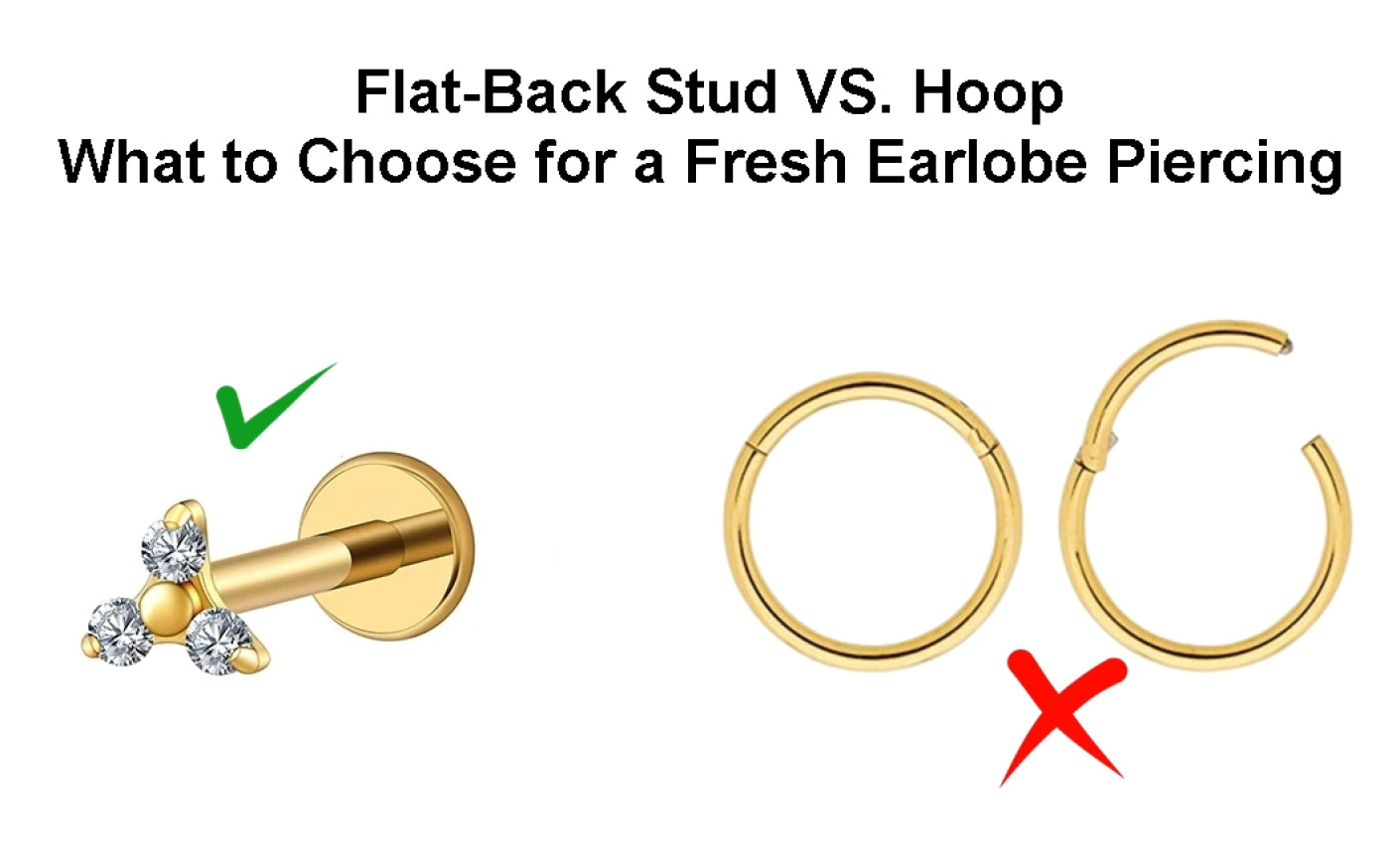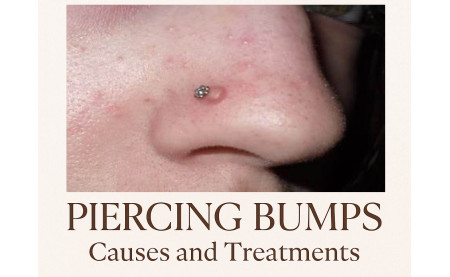Hoop vs. Flat-Back Stud: What to Choose for a Fresh Earlobe Piercing

Getting your first ear piercing is always exciting, but one of the most important decisions you’ll make is what jewelry to start with. Many people love the look of hoops and want them right away—but when it comes to fresh ear lobe piercings, choosing the right jewelry isn’t about fashion first, it’s about healing safely.
In this blog, we’ll explain in detail why flat-back studs are the best choice for new piercings, and why hoops should be avoided until full healing is complete. We’ll also break down the medical reasons in simple terms so anyone can understand.
1. Understanding the Healing Process of a Fresh Piercing
When you get a piercing, you’re creating a controlled wound. Just like any other wound, your body immediately begins a process called wound healing, which has three main stages:
1. Inflammatory Phase (First 1–2 weeks)
- Your body sends white blood cells to fight bacteria.
- Redness, swelling, and tenderness are normal.
2. Proliferative Phase (Weeks 2–6)
- New skin cells begin to grow along the jewelry.
- The piercing channel (fistula) starts to form but is still fragile.
3. Maturation Phase (Months 2–6 for lobes)
- The tissue strengthens and stabilizes.
- Risks of infection and irritation gradually reduce.
During these phases, the type of jewelry you choose makes a huge difference in how smoothly the piercing heals.
2. Why Flat-Back Studs Are the Gold Standard
Flat-back studs (also called labret studs) are specifically designed for initial piercings. Here’s why they’re the safest option:
-
Stability and Reduced Movement
- A flat-back stud sits snugly in place, minimizing movement inside the piercing channel.
- Less movement means less irritation, faster healing, and lower risk of scar tissue.
-
Medical-Grade Materials
- High-quality piercing studios use implant-grade titanium or 14k/18k gold, which are hypoallergenic and biocompatible.
- This reduces the chance of allergic reaction (contact dermatitis).
-
Flat Back = Comfort
- The flat disc at the back prevents the jewelry from poking into your skin, which reduces friction and trauma.
- Perfect for everyday activities and sleeping.
-
Promotes Straight Piercing Channel
- The straight bar ensures the new fistula heals evenly without unnecessary angles or pressure.
3. Why Hoops Are a Bad Choice for Fresh Piercings
Even though hoops look stylish, they are not safe for a brand-new piercing. Here’s why:
-
Excessive Movement (Micro-Trauma)
- Hoops rotate constantly when you talk, sleep, or brush your hair.
- This movement causes micro-tears in the healing tissue, delaying recovery and increasing risk of bumps.
-
Pressure and Angling
- A hoop curves through the piercing hole, which places uneven pressure on the tissue.
- This can lead to migration (piercing moving from its original spot) or an angled piercing channel.
-
Higher Risk of Infection
- Because hoops move so much, they act like little pumps, pulling bacteria and debris inside the wound.
- This increases risk of local infection (redness, pus, swelling).
-
Increased Risk of Keloids/Hypertrophic Scarring
- Constant irritation may trigger excess collagen production, causing raised bumps or keloids.
4. Medical Terms Simplified for Everyone
- Fistula -> The new tunnel of skin your body creates around the jewelry.
- Micro-Trauma -> Tiny repeated injuries caused by jewelry movement.
- Hypertrophic Scar -> A red, raised bump caused by over-healing.
- Keloid -> An overgrowth of scar tissue, more common in sensitive individuals.
- Migration -> When a piercing moves from its original spot due to pressure or rejection.
Understanding these terms makes it clear why stability (with a stud) is safer than movement (with a hoop).
5. When Can You Safely Switch to a Hoop?
- For earlobes, healing typically takes 3–6 months.
- Only after a piercer confirms that your piercing is fully healed (no tenderness, discharge, or open wound) can you switch to a hoop.
- Even then, it’s important to use high-quality jewelry made of implant-grade titanium or solid gold.
6. Final Thoughts – Safety Over Style
When it comes to fresh piercings, healing comes first, fashion comes later. A flat-back stud provides stability, comfort, and safety during the most delicate healing period. Hoops, while attractive, can cause complications that may leave you with scars—or even a failed piercing.
If you truly want a hoop, be patient. Start with a stud, let it heal completely, and then make the switch under professional guidance.
At Piercing Zone Dubai, we always recommend what is best for long-term results, not just instant looks. Healing well now means you’ll enjoy beautiful, safe piercings for years to come.


